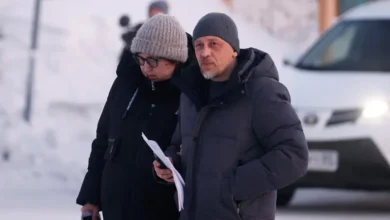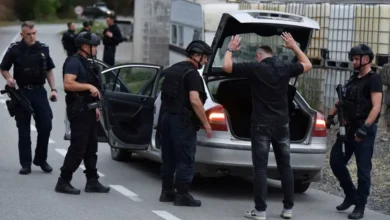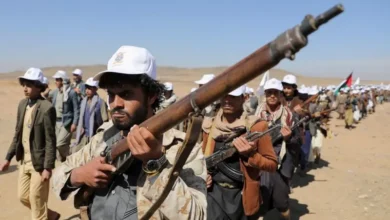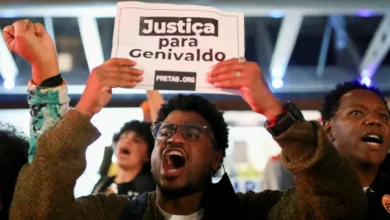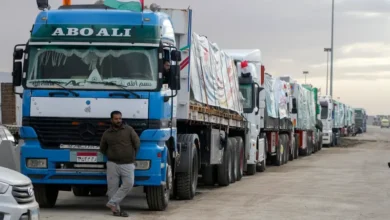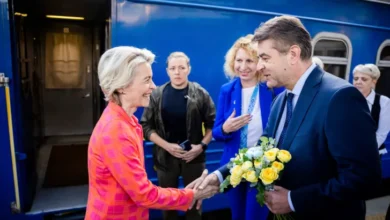Fighting for her land: My great-aunt Kamira, the Algerian revolutionary

In the spring of 1962, the air in Beni-Mazouz, a small village nestled in the mountainous wilaya (province) of Jijel, was charged with anticipation.
My father, then a young boy, remembers vividly the day the French colonial forces began their retreat from Algeria. As a convoy of more than 100 tanks and vans trundled towards the port of Skikda, he remembers a sense of freedom swelling in his heart.
“We were beyond happy,” he recalls. As far as he could see, the streets were awash in a sea of green, white and red – the colours of our flag – while voices reverberated in unison chanting “Tahia Djazair [Long live Algeria]!”
The moment symbolised the culmination of Algeria’s arduous journey, steeped in resistance, towards liberation from French colonial rule.
The brutal French invasion which began in 1830, marked the inception of a dark and oppressive chapter in Algerian history. In 1848, the government administration in Paris declared the Algerian territory across the Mediterranean an integral part of France, as though it was another domestic province.
Large-scale land theft, torture and the dehumanisation of Algerians became hallmarks of France’s settler colonial project. The Algerian government has said more than 5.6 million Algerians were killed during the French colonial period. By 1954, when the war for independence started, one million European settlers were living in Algeria.
Many people who lived in my father’s village of mostly farmers, Beni-Mazouz, are descendants of the resistance that confronted France’s military.
Among these figures was Kamira Yassi: a sturdy-handed, tattooed rural woman known for her practical wisdom and belief in the curative powers of olive oil. She was my father’s aunt, “Amti Kamira”, as he calls her, a 5-foot-2-inch (157.5cm) tender matriarch who made the tastiest chorba, a traditional spiced soup. Locally, she was revered as a fierce anticolonial nationalist. My curiosity longed to uncover more about my great-aunt Kamira, her life, dreams and motivations, through conversations with my father and family.
In 1955, Kamira became a pivotal member of the National Liberation Front (FLN), the political and military organisation dedicated to ending the French occupation. “Amti Kamira was a true mujahidia [female freedom fighter],” my father said. “She had a deep determination for us to be Algerian in the land that was always ours.”
In search of an adventure and opportunity, my father moved to England in the 1970s and has lived there since. I was born and raised in London, far from the rugged and beautiful landscapes of Jijel. Despite this, many conversations with my father often circled back to the war for independence and the peaks above the village of Beni-Mazouz.“I’m a child of the revolution, I didn’t even have shoes,” my father would say – words that echoed throughout my childhood. My school summer holidays spent in Beni-Mazouz were submerged in these tales, including ones of my great-aunt Kamira, whom I never had the chance to meet.
She wore a floral head scarf, tied in a knotted bow on her head in a way that ensured her traditional forehead tattoos were always visible, a simple line symbol above her eyebrows and another on her chin. The facial tattoos were considered a sign of beauty and the height of fashion.
Kamira’s participation in the FLN took her to the coast of Sidi Abdelaziz, to the main village of Beni Habibi and the surrounding mountains, a crucial link in the resistance against the colonial military in the area. She travelled alone, leaving her husband to care for their children and cattle. “She would walk for hours, paying no mind to the harsh weather, be it the brutal cold of winter or the relentless heat of the midday sun,” my father recalled.
In the grains of semolina carried in her basket on her head, she nestled bullets and guns – all tools of her trade in the covert operations. Hidden within the folds of her dress, she concealed secret communications – handwritten letters detailing information about the French military, or messages for FLN members in the mountains.
Because she was a woman, she could move freely through checkpoints – a privilege not afforded to her male counterparts – transporting weapons and gathering intelligence.
She often met undercover with a harki – an Algerian working with the French army – who was sympathetic to the FLN cause, to exchange vital information about the occupying forces.
These meetings along the Sidi Abdelaziz coastline were fraught with danger, but were essential in planning the FLN’s clandestine movements. The harki would share with Kamira details about the French military commanders, paratroopers, checkpoints, weaponry and their strategic objectives. She would then return home to Beni-Mazouz, where she would convene with the local fellagha – the armed anticolonial militia – composed of family members and neighbours, to transmit the intelligence she had gathered.
In the mountains of Beni-Mazouz, Kamira and the fellagha lived among picturesque stone houses with burned orange tiled roofs, surrounded by a lush array of olive, pomegranate, fig, oak and eucalyptus trees.
The mountains carry the names given to them by the Kabyle, Algeria’s ancient Indigenous peoples of the north: Jeneena De Masbah, Takeniche, Walid Aiyesh, Tahra Ez Zane and Am’ira. Our father’s history is intertwined with Takeniche, where he lived with his mother, Nouara, father, Ahmed, and brother, Ali. Kamira’s story unfolded on the next mountain of Walid Aiyesh, where she lived with her husband, two sons and three daughters.
